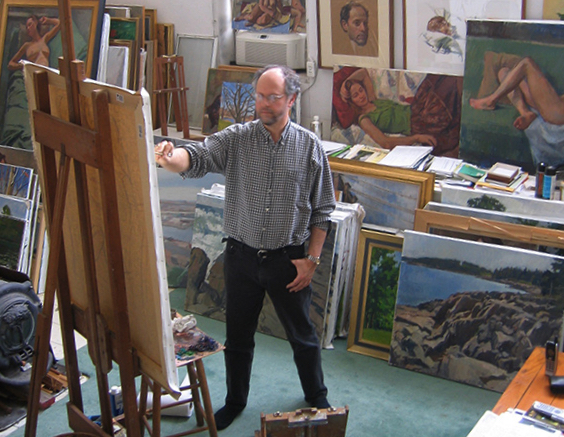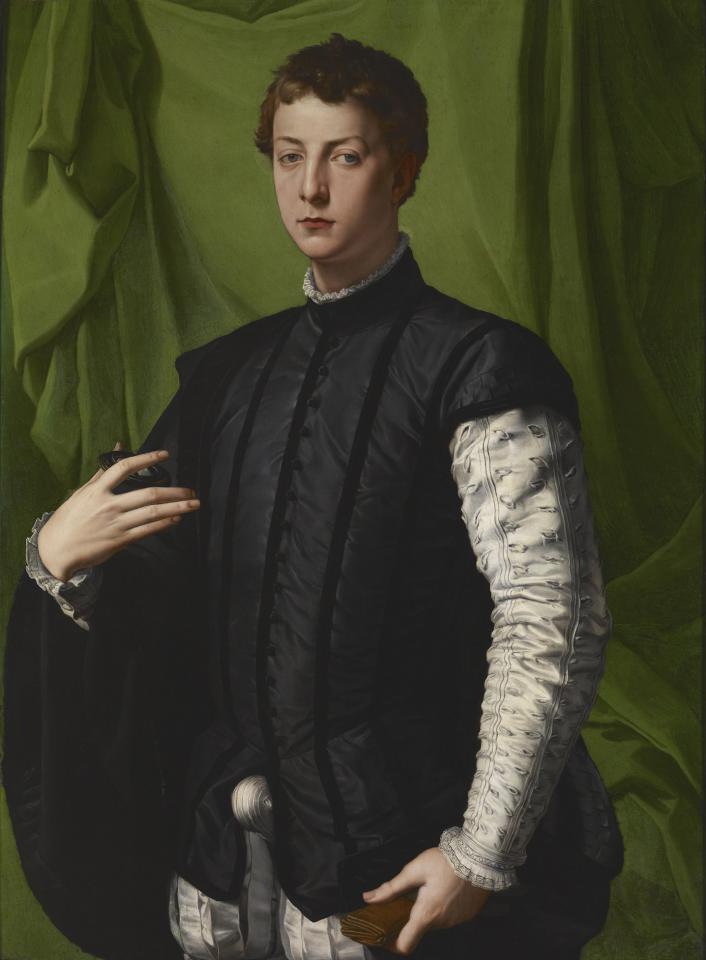
Imagine a show of Italian Renaissance portraiture in which first-rate examples by Raphael and Titian are nearly extraneous. The setting is sixteenth-century Florence, and the show is The Medici: Portraits and Politics 1512–1570, now at the Metropolitan Museum of Art. It is an examination of portraiture as a means by which the ruling elite advertised its prominence and burnished its legacy. Cosimo I de’ Medici, Duke of Florence, wasn’t interested in commissioning a painting here or there to add a little class at the margins, but waged a sustained campaign to insure that the family name would be synonymous with high culture. Artists were called on to paint and sculpt the likenesses of a family that produced dukes and popes, and they did so at a remarkably high level. Much of the exhibition is a tutorial for those of us who practice, to lesser or greater effectiveness, the art of massaging a sitter’s image with scant presumption that the result is anything more than a painted press release. Assembled here are pieces from public and private collections which make a stunning presentation of the portraiture of Florentine Mannerism.
The star in this firmament, providing a coda of sorts to the Met’s 2010 show of his drawings, is Agnolo di Cosimo di Mariano, known to us as Bronzino. His work is, appropriately, the dominant note in the exhibition; he was Cosimo’s court painter. I was never keen on Bronzino, finding his technique and his subjects cold, impenetrable. This show undoes such reservations, thanks in part to the inclusion of works I’d never seen before, like the portrait of Lorenzo Lenzi, on loan from Milan, which reminds one of Holbein and must have inspired Degas’ painting of his brother Rene. The subtext of the exhibition is to place Bronzino within the top tier of Florentine masters, no longer a footnote to the late Renaissance, but the creator of a stylistically immaculate and sometimes unsettling body of portraiture. That said, the show would still be spectacular without him. Jacopo Pontormo, Bronzino’s teacher and a more emotionally accessible painter, emerges hardly less triumphant.
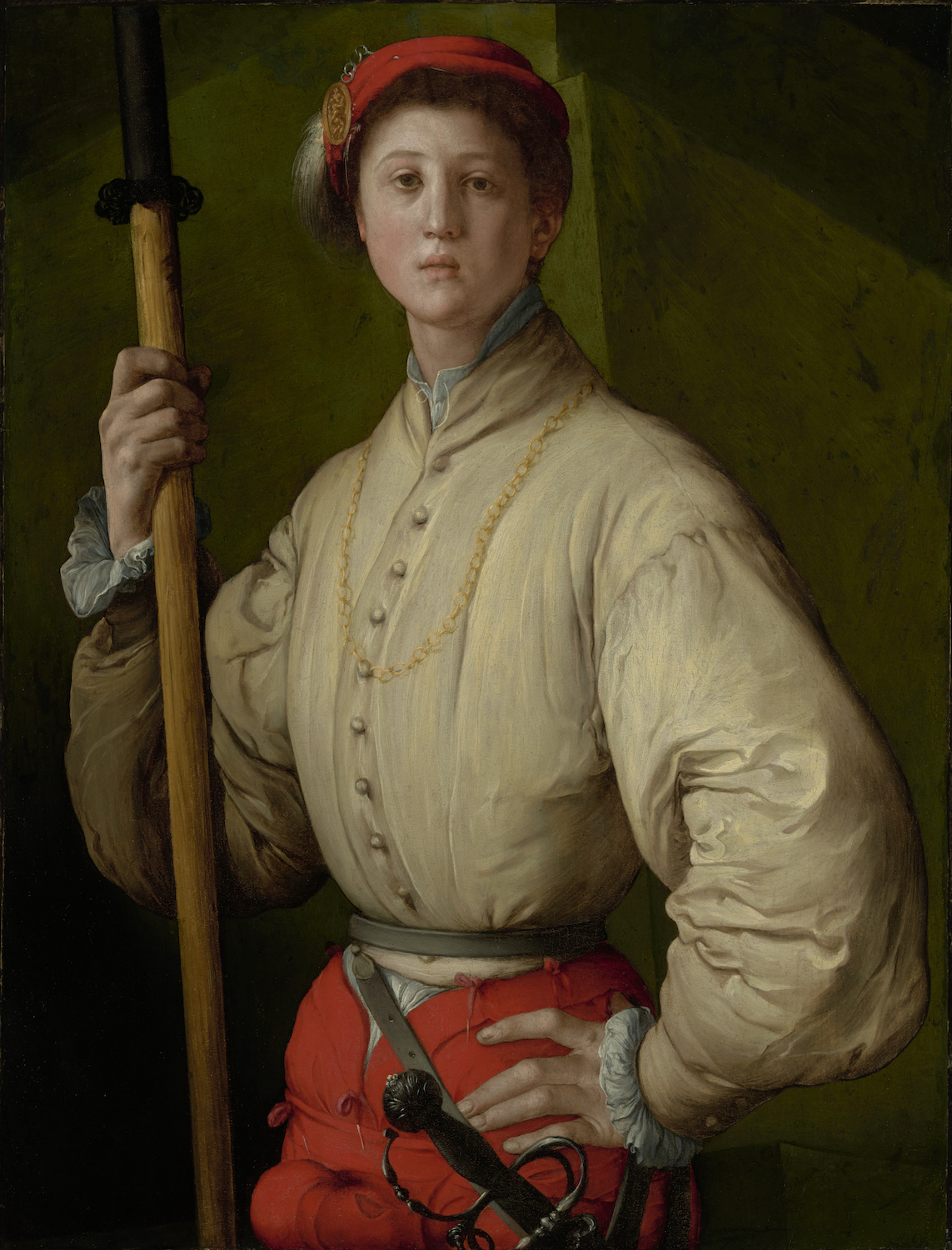
The connecting thread is Cosimo, who was born in Florence in 1519, and assumed leadership of the Florentine city state at the ripe age of seventeen. Following the assassination of Florence’s first Duke, Alessandro de’ Medici, Cosimo was installed as a puppet by a Council of Forty-Eight, who believed they would be the actual leaders of the duchy. Instead, Cosimo reneged on an agreement he’d signed and took sole power, which, through political savvy and the occasional execution, he retained for more than three decades. Under his authoritarian rule the arts flourished, and some of Florence’s greatest landmarks came to be; he completed the Pitti Palace as a home for the Medici and created both the adjoining Boboli Gardens and the Uffizi. The city familiar to art tourists was shaped, in part, by his hand.
The exhibition opens with portraits from the first decades of the sixteenth century, years when the Florentine republic transitioned to a duchy under Medici rule. According to co-curator Carlo Falciani, the region’s artists “followed a tradition based on the rigor and simplicity of the Bible and the vernacular rooted in Dante.” This sobriety is reflected in paintings that value evocation over embellishment. Rosso Fiorentino, a supporter of the republic who was ignored by the Medici, is represented by a subtle and beautiful portrait of an assertive gentleman. An austere tone informs paintings by Sebastiano del Piombo, Andrea del Sarto, and Pontormo, whose contemplative portrait of Alessandro de’ Medici drawing at his desk deflects his reputation as an “amoral libertine,” a man around whom even nuns were not safe. The Pontormos are exquisite. In the few years that separate his Portrait of Two Friends from Portrait of a Man with a Lute and the Getty Museum’s famous Portrait of a Halberdier (once thought to be a portrait of the teenage Cosimo), clothing and color grow increasingly luxurious, as if recording the cultural change Florence was undergoing. Their stylishness nearly eclipses the naturalism of Raphael’s brilliant Lorenzo de’ Medici, Duke of Urbino, to whom Machiavelli had dedicated The Prince.
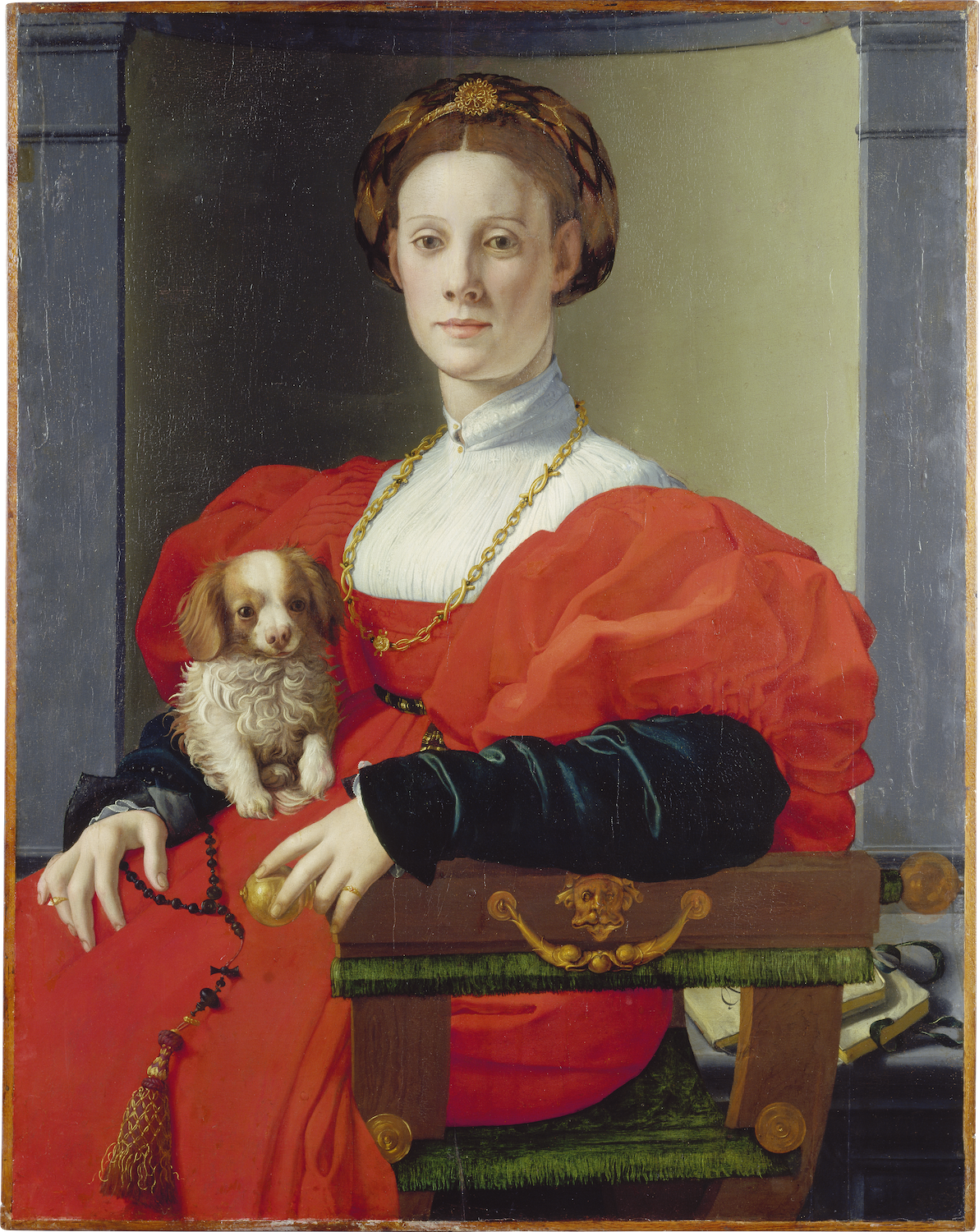
Stylishness was the hallmark of portraiture under Cosimo’s patronage. This was not always a smooth undertaking, even for Bronzino. Idealization of Cosimo took several paths, though it must be admitted that in none of them does the subject look particularly handsome, which suggests that the autocrat was secure enough to forego a measure of vanity. Early on, Bronzino attempted a mythological angle, with the youthful Cosimo posturing in the guise of a naked Orpheus. The portrait’s eroticism has engendered a wealth of interpretations, including the dubious theory that it was intended to mock the young duke’s virility. Yet, the image seems to have reinforced Cosimo’s confidence in Bronzino as a court painter; six or eight years later, Bronzino painted the duke in armor, a resolute leader whose hand rests lightly on a helmet. A later portrait of Cosimo as statesman is equally well done, if also uninspired. Cosimo fared better as the subject of sculpture. A finely wrought marble bust by Giovanni Bandini bestows the noble gravitas of old age. It is excelled by Benvenuto Cellini’s conception of Cosimo as regal commander, which is, to co-curator Keith Christiansen, “one of the most awe inspiring portraits in the Western canon.” The curators are inclined toward overstatement, if understandably so.
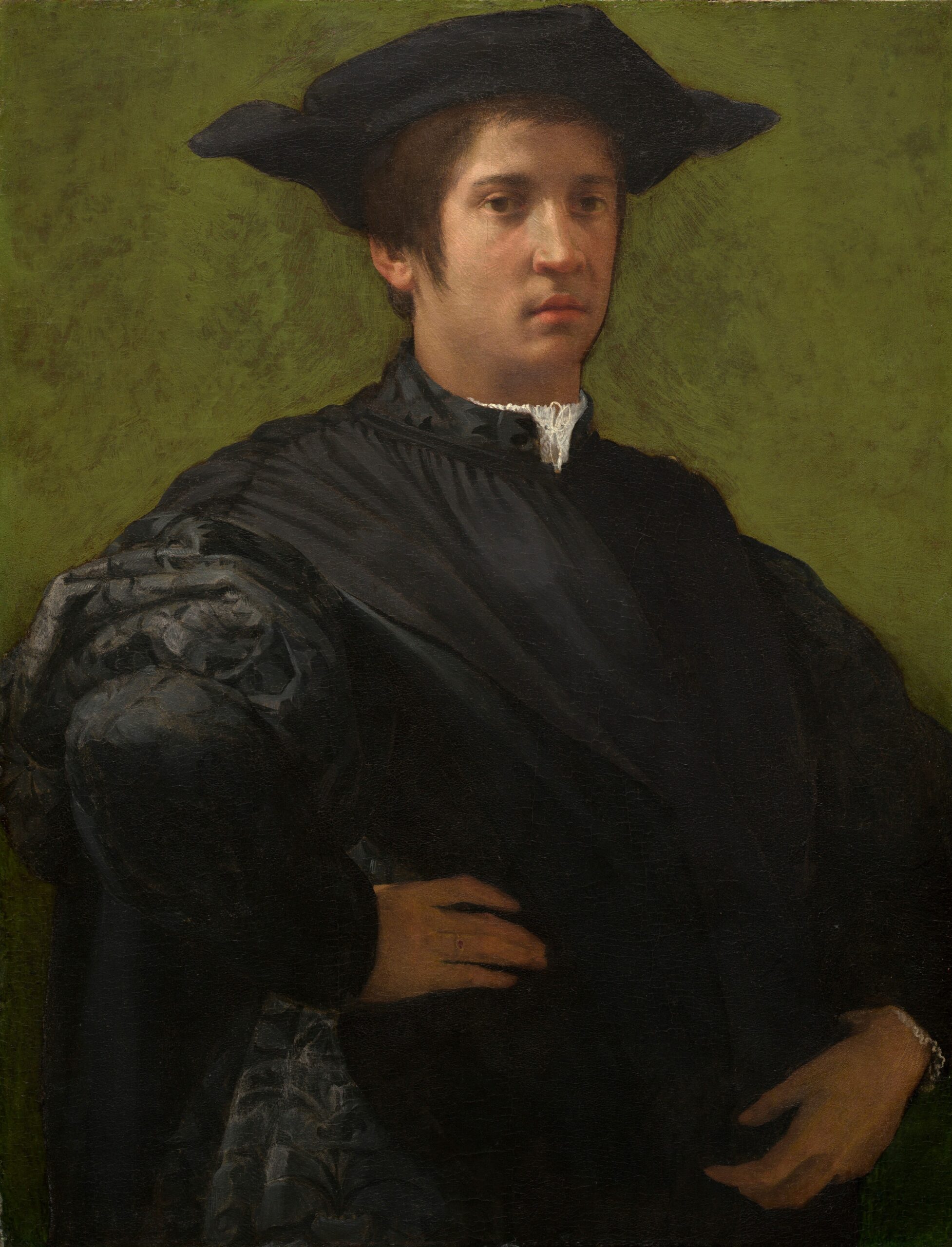
Bronzino is more fully himself elsewhere. Portrait of a Woman with a Lapdog, once attributed to Pontormo, bespeaks the detached refinement that is Bronzino’s signature. Its cut-and-pasted segments—the dog looks like it was added after the fact—are reminiscent of Moroni’s portraits from the recent Frick show, though handled here with greater sophistication. The Met’s Portrait of a Young Man with a Book and the Frick’s Ludovico Capponi are both in attendance; each is a masterpiece, the enamel surfaces and hard edges employing the right vernacular for paintings of arrogant youth. Of note are the aforementioned Lorenzo Lenzi (an early and unusually atmospheric portrait, before Bronzino’s idiosyncrasies had hardened, and possibly my favorite of the show); A Young Woman and Her Little Boy, the faces mask-like and the woman’s neck as distorted as a Parmigianino; and Stefano Colonna, who somehow comes off gracefully in black armor. There are a number of portraits by Francesco Salviati, who was in Cosimo’s employ alongside Bronzino in the 1540s. Falciani describes the competition between the artists as an aesthetic referendum between Florentine and more cosmopolitan approaches. Eventually Bronzino triumphed and Salviati returned to Rome. But Bronzino’s victory was not due solely to his adoption of the Florentine style—he was a better and more consistent artist. Salviati’s finest works are a sensitive bust of Carlo Rimbotti, and, melding references to multiple Italian schools, the memorable Bindo Altoviti, painted on a marble slab. Then there is Portrait of a Man, which its owner, the Getty Museum, attributes to Salviati. Falciani concludes it is by Bronzino, and it is so attributed in this exhibition. While much of the panel is consistent with Bronzino’s manner, it is difficult to accept the theory that he painted the head, as Falciani suggests, in deference to Salviati’s influence. For me, the painting’s authorship remains uncertain.
Christiansen calls the portraits a “record of the negotiation of private and public spheres,” but the negotiation was over before it began. The portraits of Cosimo’s era were conceived purely for the public realm. They were, the show readily acknowledges, political propaganda. We care less now about the subjects than the paintings, which reaffirm that the business of commissioned portraiture—historically treated as a second-level endeavor—was capable of producing breathtaking stuff, art of the first rank.
The Medici: Portraits and Politics 1512–1570 will be on view at the Metropolitan Museum of Art through October 11, 2021.


